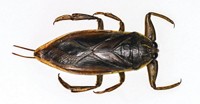Advertisement
Grab your lab coat. Let's get started
Welcome!
Welcome!
Create an account below to get 6 C&EN articles per month, receive newsletters and more - all free.
It seems this is your first time logging in online. Please enter the following information to continue.
As an ACS member you automatically get access to this site. All we need is few more details to create your reading experience.
Not you? Sign in with a different account.
Not you? Sign in with a different account.
ERROR 1
ERROR 1
ERROR 2
ERROR 2
ERROR 2
ERROR 2
ERROR 2
Password and Confirm password must match.
If you have an ACS member number, please enter it here so we can link this account to your membership. (optional)
ERROR 2
ACS values your privacy. By submitting your information, you are gaining access to C&EN and subscribing to our weekly newsletter. We use the information you provide to make your reading experience better, and we will never sell your data to third party members.
Environment
Newscripts
Catfish Tales
by Faith Hayden
October 27, 2008
| A version of this story appeared in
Volume 86, Issue 43

It's the week of Halloween, so a few spooky fish stories seem apropos.
If you've got a fall fishing trip planned, you might want to tell this tale around the campfire: Wade in the waters of the Great Kali River at the India-Nepal border, and a GIANT MUTANT CATFISH will leap out of the river and gobble you up. An urban legend? People living in India and Nepal don't think so.
A catfish believed to have developed a taste for human corpses was captured by British biologist Jeremy Wade in the river earlier this month. Traditionally, the Great Kali River is used to dispose of bodies after Hindu funeral rites, and some locals believe the catfish has been, shall we say, recycling the remains.
The giant fish, known as the goonch (or Bagarius yarelli), was measured at more than 161 lb and about 6 feet in length: a world record. Its reputed appetite for people has been blamed for at least three deaths over the years. Locals believe the goonch was responsible for the 1988 disappearance of a 17-year-old Nepali boy who was cooling himself in the river when something pulled him under. Later that same year, a small boy met a similar fate. Last year, an 18 year old was snatched by a creature described by an eyewitness as an "elongated pig."
Wade featured his adventure capturing the goonch in a BBC documentary, subtly titled "Flesh Eating River Monster," in Britain on Oct. 21.
If the thought of being eaten by a mutant fish isn't enough to give you second thoughts before throwing your hook in the water, then maybe the story of a VAMPIRE CATFISH that attacks people will.
The candiru, or "the bloodsucking catfish," is a parasitic freshwater fish with a nasty feeding habit; it's found in the Amazon River.
Legend has it that this fearsome fish is attracted to urine and will swim at high speeds upstream and leap into—and embed itself inside—unfortunate bathers as they urinate in the river.
As with most rumors, the truth in this particular tale resides somewhere between fact and fiction.
The candiru is eel-shaped, translucent, about an inch long, and lurks near the bottom of the Amazon River. It hunts its prey by detecting expelled chemicals such as urea and ammonia from the gills of other fish. The nightmarish candiru also has sharp teeth and backward-pointing spines on its gill covers, which umbrella out when it enters a host, making the creature very difficult to remove.
Sound like a terrible fate for other fish? Well, how about for a person? There are documented cases of ambitiously hungry candiru attacking people—and there is no delicate way to describe this—by entering the urethras of unsuspecting swimmers (J. Wilderness Med., 1991, 2, 304). Forced removal of the fish can lead to lacerations inside the victim, so the fish must be surgically removed.
Thankfully, the monster-movie-like accounts of the candiru swimming upstream and leaping out of the water into a human victim have never been proven and are widely disputed. But, mind you—especially if you are trick-or-treating along the Amazon—the catfish does feed off blood, and it has attacked people.
Faith Hayden wrote this week's column. Please send comments and suggestions to newscripts@acs.org.






Join the conversation
Contact the reporter
Submit a Letter to the Editor for publication
Engage with us on Twitter